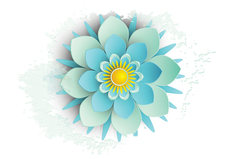FreieFarbe and the quest for free color communication
Color my Freedom

FreieFarbe is an association dedicated to promoting free standards for color graphics.
Colors and color palettes existed for many years before the arrival of modern computers, and the graphics industry developed methods for handling color that seem out of date by today's standards. Different organizations and vendors often have their own color palettes. In some cases, the formula necessary for creating a color is guarded as a trade secret. Some colors are even trademarked. An organization called freieFarbe (Free Color) has been working to modernize color specifications. FreieFarbe advocates open and free color communication. Their goal is to promote the use of mathematically defined color models and ISO standards for color specification and selection.
FreieFarbe was founded in Oldenburg, Germany in 2016. The founding members are German and Swiss professionals who use color in their work. The association now has around 50 members. The association's ecosystem includes commercial providers, as well as free projects such as Scribus and Gimp.
The Problem
The freieFarbe website gives an example based on the RAL color palette, a standard used for specifying colors for varnish, powder coatings, and plastics in Europe. An architect or designer can specify a RAL color, such as RAL 6011, but the options for recreating this color graphically are actually quite limited. The RAL color palette is not available on the computer without specialized software. Even if you were able to recreate the hue on your computer using computer-friendly RGB colors, you wouldn't be able to print it, because printer ink and printing devices don't map conveniently to the RAL color space, and the RGB spectrum itself is device-dependent, so it might not print the way it looks on your screen.
[...]
Buy this article as PDF
(incl. VAT)
Buy Linux Magazine
Subscribe to our Linux Newsletters
Find Linux and Open Source Jobs
Subscribe to our ADMIN Newsletters
Support Our Work
Linux Magazine content is made possible with support from readers like you. Please consider contributing when you’ve found an article to be beneficial.

News
-
Another Linux Malware Discovered
Russian hackers use Hyper-V to hide malware within Linux virtual machines.
-
TUXEDO Computers Announces a New InfinityBook
TUXEDO Computers is at it again with a new InfinityBook that will meet your professional and gaming needs.
-
SUSE Dives into the Agentic AI Pool
SUSE becomes the first open source company to adopt agentic AI with SUSE Enterprise Linux 16.
-
Linux Now Runs Most Windows Games
The latest data shows that nearly 90 percent of Windows games can be played on Linux.
-
Fedora 43 Has Finally Landed
The Fedora Linux developers have announced their latest release, Fedora 43.
-
KDE Unleashes Plasma 6.5
The Plasma 6.5 desktop environment is now available with new features, improvements, and the usual bug fixes.
-
Xubuntu Site Possibly Hacked
It appears that the Xubuntu site was hacked and briefly served up a malicious ZIP file from its download page.
-
LMDE 7 Now Available
Linux Mint Debian Edition, version 7, has been officially released and is based on upstream Debian.
-
Linux Kernel 6.16 Reaches EOL
Linux kernel 6.16 has reached its end of life, which means you'll need to upgrade to the next stable release, Linux kernel 6.17.
-
Amazon Ditches Android for a Linux-Based OS
Amazon has migrated from Android to the Linux-based Vega OS for its Fire TV.

